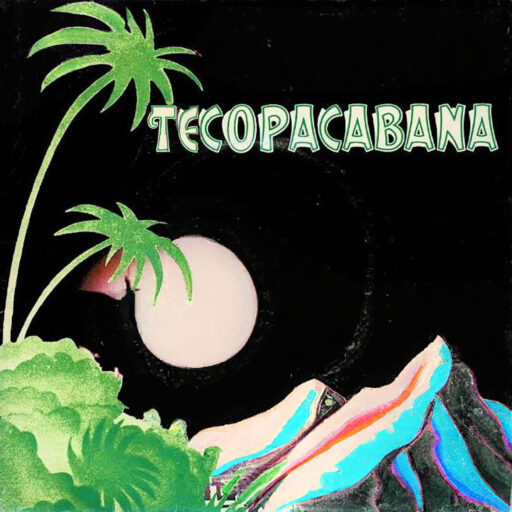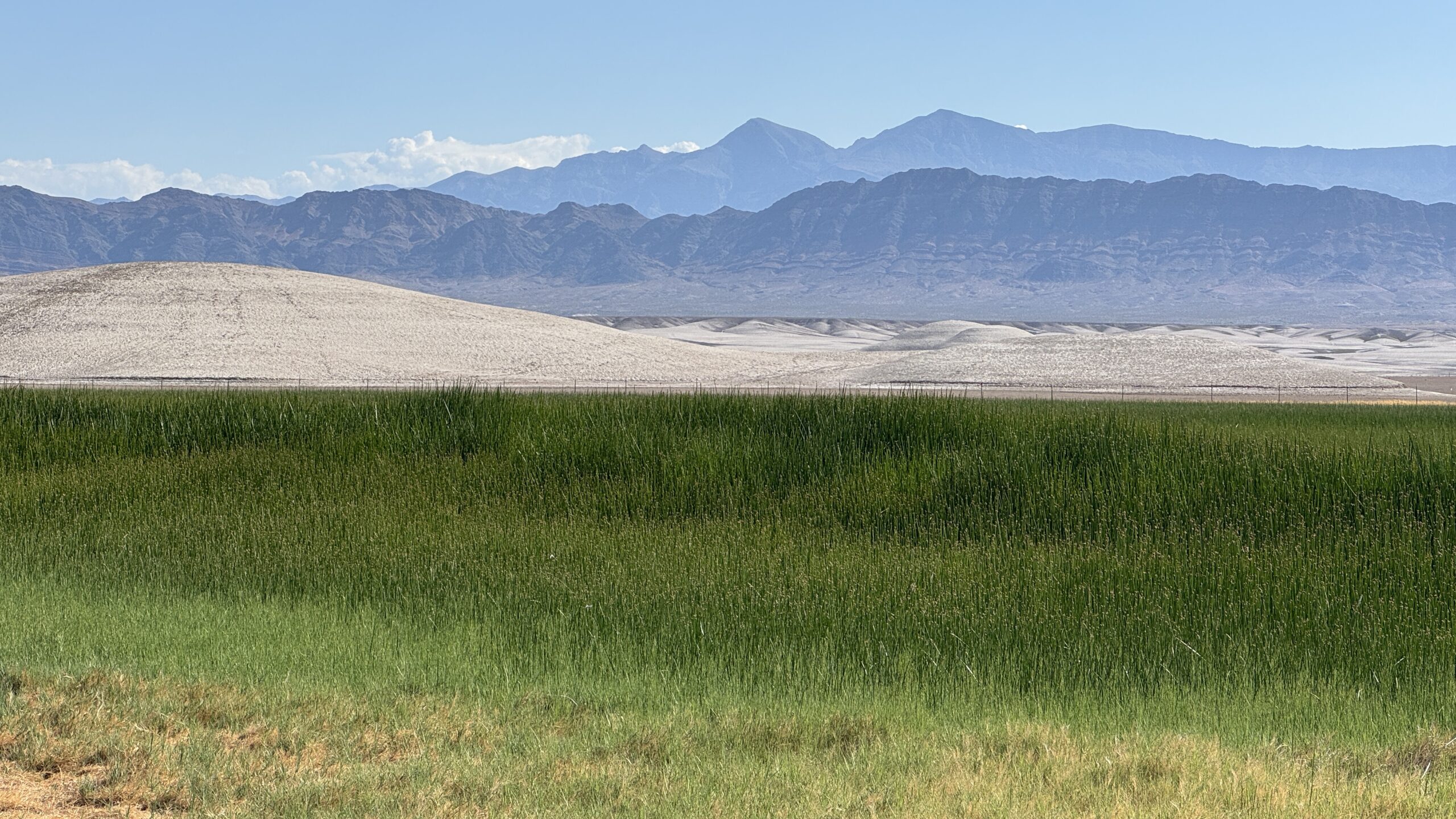In the late 19th century, when settlers first began to cultivate the Amargosa Basin and the valleys surrounding Tecopa, they were not starting from scratch. The land had already been studied, shaped, and survived by the Southern Paiute and Mojave peoples for centuries.
As historian Sherryl Lynn Weber documented in her 1995 University of Nevada, Las Vegas dissertation, A Garden in the Desert: A Regional Study of Ranching and Farming in Southern Nevada, 1870–1930, settlers across the Amargosa Basin built their farms and ranches upon irrigation methods long practiced by Southern Paiute farmers. The earliest settlers, often miners turned ranchers, built their agricultural systems upon Indigenous techniques—and that knowledge was quickly harnessed to feed the region’s mining economy.
Learning from the Desert’s First Farmers
Long before settlers arrived, Native communities along the Amargosa River and in nearby valleys grew corn, beans, melons, and pumpkins near natural springs and seeps. They practiced what Weber calls a “simple but effective” irrigation method—diverting spring water through hand-dug channels to small floodplains. Archaeological remains of these canals were later discovered around the Las Vegas Valley and other spring-fed areas of the Mojave.
When Mormon missionaries established their short-lived mission at Las Vegas in 1855, they adopted these same methods, digging ditches and controlling spring water flow for small plots of wheat, beans, and cotton. The “demonstration farm” they established for the Paiutes was ostensibly to teach agriculture, but Weber notes the irony: the Paiutes were already doing it. In reality, the settlers were learning desert irrigation from the people who had been practicing it all along.
This exchange—part imitation, part appropriation—set the foundation for every ranch and farm that followed in the region. From Indian Springs to Pahrump to Ash Meadows, settlers applied the Indigenous model of small-scale, water-based cultivation. Each new ranch was established beside a spring or seep, not because it was convenient, but because it was the only way to survive.
The Mining Frontier’s Food Chain
By the 1870s, as mining expanded in the southern Nevada–eastern California corridor, farming took on a distinctly commercial role: it became the supply chain for the mines.
Tecopa, with its hot springs and ore deposits, stood at the crossroads of this new economy. Ranchers in Pahrump, Ash Meadows, and Indian Springs produced grains, vegetables, fruit, and livestock specifically to sell or trade to nearby mining districts like Tecopa, Resting Springs, and later, Death Valley’s borax works.
Weber shows how the region’s farms and ranches were rarely self-contained enterprises; they were extensions of the mining frontier, their prosperity tied to the rise and fall of ore prices. Freight wagons carried hay, grain, and fresh produce to mining camps, while returning with mining tools and manufactured goods. Butter, which sold for ten to fifteen cents a pound, was one of the few reliable cash commodities. Cattle and dairy production were equally essential, providing fresh meat and milk to isolated labor camps.
Mining created a captive market: every mine needed food, and the desert’s farmers—however small-scale—were its suppliers. The rhythm of agriculture in the Amargosa Basin followed the pulse of mineral discovery. When mines thrived, ranches expanded. When mines failed, farmers returned to subsistence production.
A Desert Economy Built on Water and Labor
Weber’s census data from the 1870s and 1880s reveal that the region’s early agricultural base remained modest despite the mining stimulus. The isolation and lack of railroads meant most operations were small, family-run, and dependent on local labor—including Paiute farmhands who helped clear land, tend crops, and maintain irrigation ditches.
Still, the economic structure was clear: mining provided demand, water provided possibility, and local ingenuity filled in the rest. By the early 20th century, with the addition of irrigation pumps and experimental crops like alfalfa, cotton, and cantaloupes, settlers hoped to push beyond subsistence and create a sustainable agricultural market. Newspapers like The Age promoted such efforts with boosterish zeal, seeing in every cotton boll or bean field a sign that the desert might yet be tamed.
From Survival to System
By the 1920s, agriculture had evolved from a survival practice into a structured, businesslike system. Ranchers sought efficiency through science and crop specialization, echoing the industrial precision of the mining world they supplied. Cotton and fruit orchards were promoted as “one-crop specialties,” and new cooperatives attempted to standardize production and marketing.
Yet, even at its height, the desert farming economy remained a fragile appendage of the mines. When mining slowed, the agricultural market collapsed; when the railroad bypassed the old trade routes, Tecopa’s economic lifeline weakened.
A Legacy Written in Water
What began as a borrowing of Indigenous irrigation methods became a network of spring-fed ranches that formed the economic backbone of the desert frontier. The settlers’ understanding of water management—learned from Paiute farmers—allowed them to feed the mining workforce that gave Tecopa its first prosperity.
The economy that followed was never large, but it was ingenious: an adaptive system of wells, canals, livestock, and crops precisely tailored to the desert’s limits and to the miners’ appetites. Tecopa’s early prosperity, Weber’s work reminds us, was not struck from stone—it was grown from the careful tending of water, land, and the hard-earned lessons of those who already knew how to make the desert live.
All information in this article is drawn solely from Sherryl Lynn Weber’s 1995 University of Nevada, Las Vegas dissertation, “A Garden in the Desert: A Regional Study of Ranching and Farming in Southern Nevada, 1870–1930.”


Leave a Reply